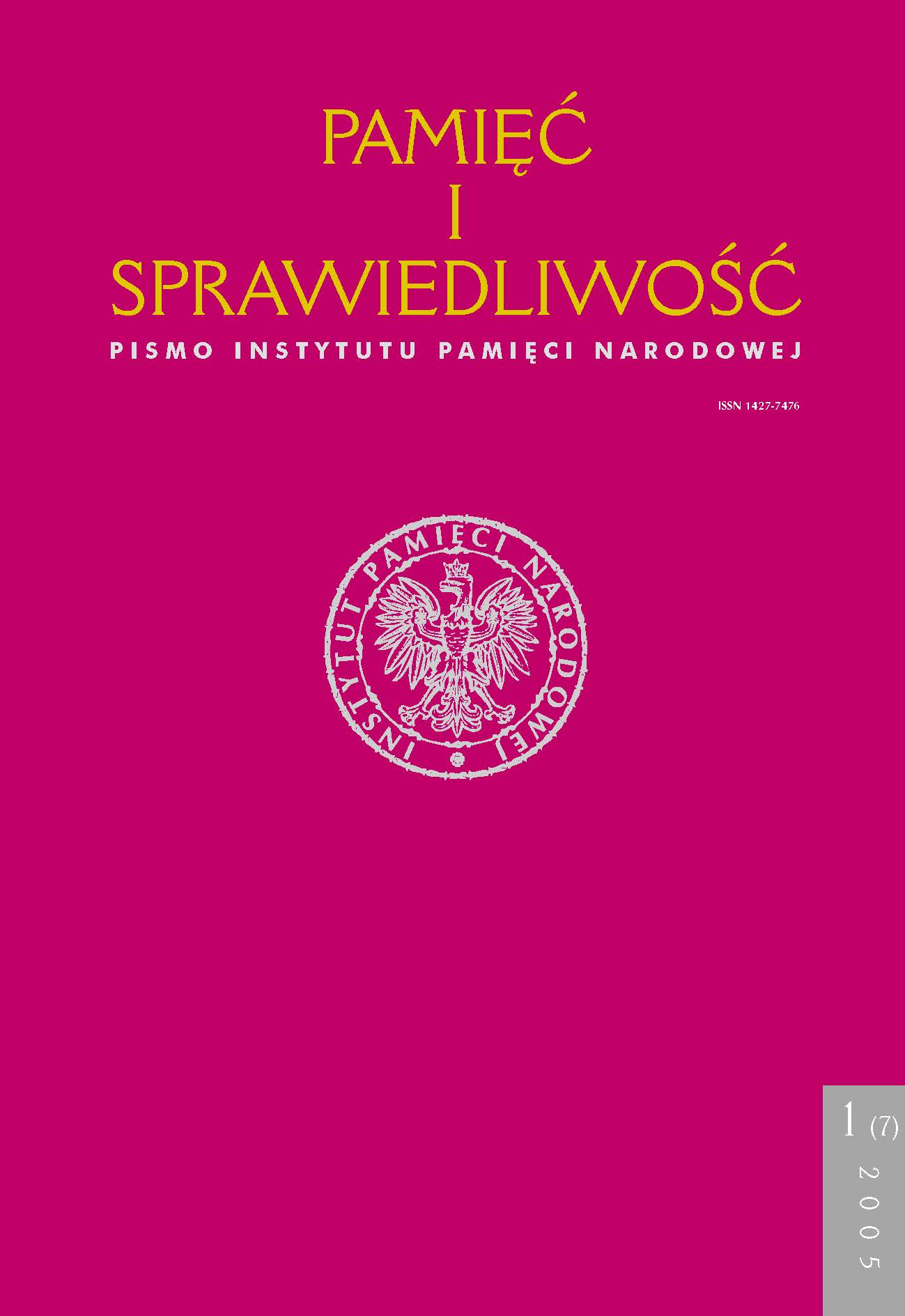“Reaching out” to Home Army (AK) members. The Security Service’s approach to AK milieus by the Gdańsk Coast after 1956
Remembrance and Justice, Vol. 7 No. 1 (2005), pages: 271-316
Publication date: 2005-06-30
Abstract
One of the social groups which was intensely monitored and identified by the Security Services in the Polish People’s Republic (PRL) was that of the Home Army combatants. The article asks about the scale and results of the Secret Services activities regarding people whose postures were shaped by the Home Army ethos. It is intended as a stimulous for a wider discussion on the “the long lasting endurance” of the Home Army in the Polish People’s Republic.
The Home Army members belonged to what the Security Services called “traditional” milieus (środowisko). There were hundreds of thousands of them in the country, they were counted by the thousand in Pomerania. It was neither a homogenous nor organised group. The combatants would gather round their commanders and colleagues in small groups from a dozen to a few dozen. It seems that in the period of their greatest activity (after
1956) as well as at the beginning of the 1970s no more than 700 people belonged to the Pomerania Home Army milieu. “Milieu” in this context is thus a Security Service term. It is a group of people who are an object of operational interest. It includes animators of
combatant life as well as masses of socially passive Home Army members. They were registered and submitted to direct (circumstantial) invigilation as potentially hostile people. This state lasted throughout communism in Poland.
Did the Security Services have reasons to suspect Home Army members of being disloyal or hostile? The Home Army members did not assume a homogenous political or ideological attitude. Those that continued fighting with communism were few. After 1956 active fighting lost its “bellicose” meaning. In the Polish People’s Republic reality, it meant consolidating the milieu, collecting documents and reports from participants of partisan
fights as well as open, but more often semi-open challenge (to the authorities). From the beginning of the 1970s the Home Army supported independent initiatives such as funding plaques in churches or commemorating the Home Army in other ways, they also supported the political opposition. The latter form of fighting concerned a small group of people – led by Marian Gołębiewski, Kazimierz Pluta-Czachowski and a few other indomitable spirits. On the coast there were no anticommunist activists, who were so committed even though a few Home Army leaders managed to gather other people round themselves, consolidating them in opposition to the system. The vast majority took a conforming attitude, seemingly agreeing to the rigours of the people’s state. The non-compromising attitudes of these people were not only softened by the repressive character of the system, but also social privileges. Despite this obvious immitation, they did not resign from the core values of the Home Army ethos. From today’s point of view one can say that it was an important component of anticommunist opposition.
Most read articles by the same author(s)
- Janusz Marszalec, Rafał Wnuk, Grzegorz Mazur, Tomasz Strzembosz, Leszek Żebrowski, [Dyskusja] Polskie Państwo Podziemne. Nadzieje i rzeczywistość , Remembrance and Justice: Vol. 2 No. 2 (2002)
- Janusz Marszalec, Polskie Państwo Podziemne. Ciągłość i trwanie , Remembrance and Justice: Vol. 2 No. 2 (2002)
 Język Polski
Język Polski
 English
English
 Deutsch
Deutsch
 Français (France)
Français (France)
 Italiano
Italiano
 Русский
Русский


 PDF (Język Polski)
PDF (Język Polski)
